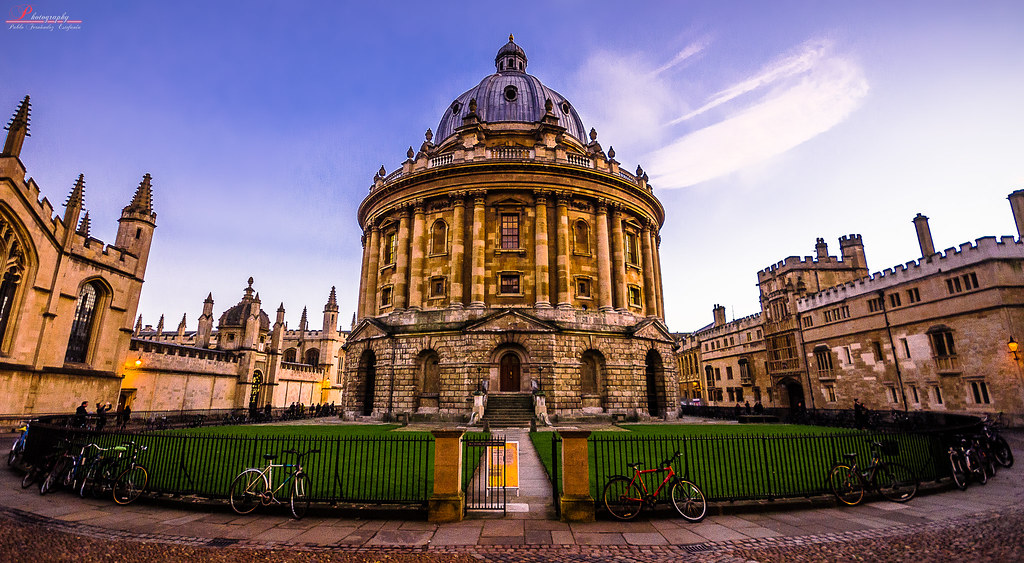The Poly Memorial Chapel buzzed with anticipation, capturing the lively spirit of early September. In the initial days of the new school year, students were adapting to routines that would shape the months ahead. It was a Tuesday, marking the first assembly of the school year. Conversations filled the chapel as students, still basking in the glow of summer, caught up with friends and shared stories.
Senior student government leaders stood poised at the podium, ready to welcome the community to the first collective gathering of the year. Their voices echoed with the enthusiasm of a fresh start until there was a sudden disruption. The football coach shuffled through the chapel aisles and approached the headmaster, David Harman. He quickly whispered in his ear, prompting Mr. Harman to rise from his seat, interrupting the senior speakers.
“I have just been informed that a plane has hit one of the twin towers.”
In an instant, the enthusiasm that filled the room quickly changed to fear. A once normal Tuesday quickly became a day of monumental significance—one that would be remembered forever.
Over the next two decades, the events of September 11, 2001 would continue to impact Poly and be memorialized each year. Around the 20th anniversary, in 2021, the approach to commemorating the tragic events of 9/11 shifted, with a focus on prioritizing education over remembrance. This change prompts an exploration of Poly’s evolving response to 9/11, tracing the transition from solemn remembrance to an emphasis on educational initiatives.

On that day in September, after the chapel dismissal, students headed to their regular classes, and by the time Harold Bernieri, a history teacher at Poly, entered room 218 for his 11th-grade U.S. history class, the news had fully spread. The classroom television flickered with shocking images of the 9/11 terrorist attacks, revealing the horror that had unfolded.
In the midst of shock and fear, students turned to their history teacher for answers. However, Bernieri, grappling with his own confusion, found it challenging to provide clarity. “I remember students in the room asking me, ‘Why would anyone want to do this to us?’” he recalled. “It was difficult because students were asking me these questions, and I was their history teacher. I was supposed to know, but I didn’t. I didn’t know how to teach historical events while they were unfolding in real-time.”
Amid the chaos, former English Teacher and current Interim Head of School John Rankin, didn’t have class. “Everyone just stopped. We stopped teaching. I remember walking down the history hallway and seeing the kids staring at the classroom televisions in silence. When the second plane hit, everyone was already watching the news. There were people here whose family members worked in the towers. And then there were others who just lived in the city and couldn’t get home.”
As news of the attacks spread, the logistical nightmare began. According to a 2001 Polygon article, “Students from Brooklyn, Queens, Staten Island, and the Bronx managed to find their way home, the closing of all New York City bridges and tunnels left students residing in Manhattan stranded. As a result, members of the Poly community ranging from students to the Headmaster himself, quartered Manhattanites until passage into the city became available.” In face of this adversity, the Poly community rallied. Parents and teachers opened their homes, ensuring that every student found a safe haven.
Girls’ Varsity Basketball Coach Michael Junsch recalled, “By two p.m. the entire student population was off campus in somebody’s house. It might not have been their own, but we made sure that every single student was somewhere safe.” This sense of unity and resilience in the face of unprecedented tragedy defined those early days of September at Poly.
School was closed the following day, as most families could not get their children to school. Writing Support Assistant and former Upper School Dean and History Teacher Susan Beiles shared insights into the administrative response during that fateful week.
“I remember a few emergency meetings that week. We were trying to make plans on how we could help our students. At this time, everyone was just confused and scared. The school began to come together as a real community.”
When classes eventually resumed a few days later, the Poly community attempted to comprehend the magnitude of the event. English teacher John Rearick elaborated on the immediate post-9/11 days: “When classes returned, there were a few impulses. One of them was to acknowledge what a huge thing 9/11 actually was. The other one was to try to restore some sense of normality to students’ lives. We had to do these two things at once. We had to pivot between letting students talk about their feelings and discuss what a monumental and terrible thing this was.”
Over the next several months, Poly continued to adjust to a post 9/11 world. The community came together to construct a memorial garden nestled opposite the pond at the front of the school. This space became a living tribute to alumni Andrew Abate ’82, Vincent P. Abate ’79, Joseph Della Pletta ’95, Terrence Gazzani ’95, Christopher Grady ’80, Joseph J . Hasson Jr. ’85, Mark Hindy ’91, Joseph A. Mascali P’01, William R. Peterson ’72, Lars P. Qualben ’69, Andrew Rosenblum ’74, and featured a plaque, a sundial, and a small garden. The creation of this memorial garden was detailed in the documentary “Lessons of September: One School Remembers 9/11.” In the documentary, former Assistant Head of Operations Steven Andersen explained the process, saying, “We had a conversation with our director of development and the headmaster, and we talked about a tree. Somebody else could do a tree; it’s gotta be more than a tree. They have no place to go, we have to provide them with a place to go. Who wants to go to any place other than a garden, so we built a garden.” This space was designed to live, thrive, and regenerate yearly.
In the years that followed, this initial act of memorialization evolved into a cherished tradition. Poly students, faculty, staff, and families would convene in the 9/11 Memorial Garden on the Dyker Heights campus. For each ceremony, 11 9/11 Memorial Scholars were selected to participate by saying their name, grade and the scholar’s name that they represent. These students were selected by recommendations from the Upper School Deans as students that are outstanding members of the Poly community and who exemplify the highest moral character.
For nearly two decades, this tradition would continue. The hillside surrounding the garden, where the family members of the 9/11 victims are remembered, would be filled with Middle and Upper School students. Following remarks from the Head of School, the community would then be introduced to the 9/11 Scholars selected that year.
Former School Psychologist Karen Ezra reflected on the impact of this tradition, citing an example of a young student whose father perished on 9/11. Initially, he transferred to another school but, as he grew older, began attending the yearly service with his mother. Witnessing his journey of resilience and growth over the years, Ezra expressed, “It was wonderful to see. Year after year, we watched him grow up, move away, he got married, he had a baby, and it was just really meaningful to get to see his life flourish after having gone through such a horrible, traumatic experience.”
In 2020, the annual ceremony underwent a transformative shift to a virtual platform in response to the COVID-19 pandemic. The commemorative event took place virtually, adapting to the unprecedented circumstances. During the remembrance ceremony, then Head of School Audrius Barzdukas P’20 spoke, emphasizing the importance of honoring the memory of those lost on 9/11.

For the 20th anniversary in 2021, Poly reverted back to the ceremony out at the garden, as school had returned to fully in person classes, asking students and faculty to once again dress up and walk out to the Memorial Garden for the ceremony. Vincent P. Abate ’79 September 11 Memorial Scholar Amber Dosik ’25 explained the biggest issue with the entire school being at the ceremony.
“I remember that a lot of students weren’t paying attention because it was chaotic, no one could hear anything, and it was really just too big of a group. Kids were kind of talking amongst each other and not really respecting what was going on,” said Dosik. (Dosik is the Head Layout Editor for the Polygon.)
In 2022, the Poly community adjusted its approach to commemorating the tragedies of 9/11, shifting from a traditional gathering in the Memorial Garden to classroom discussions. Administrators aimed to make the experience more meaningful for students of varying ages. The history department encouraged teachers to facilitate discussions using provided resources, allowing flexibility in presenting the topic. The changes addressed challenges from previous ceremonies, offering a more personal and focused memorial service for the families of alumni and a Poly parent who perished.
After twenty years of remembrance ceremonies, Poly aimed to adjust the program to better fit the needs of the community. Director of Student Life Jared Winston explained the motives behind this change. “Around that 20 year mark, we thought it would be a good idea to reconsider how we educate future Poly students about the events of September 11. Going out to the Memorial Garden was so powerful for so many years because there was an understanding among the student body — students had been alive during that time or been directly impacted by the events. But, as we got farther away from that day, our students had less and less of a sociocultural attachment to that day, and so we began to consider how we might reinvent the memory of September 11 at Poly.”
On the 2022 anniversary, Poly still held a 9/11 memorial ceremony, but it was exclusively for a smaller audience, including families of victims, select faculty members, and 9/11 scholars. Meanwhile, the student body, instead of attending the ceremony, participated in classroom-based learning about the significance of the event and observed a dress-up day out of respect.
Over the past few years, the 9/11 recognition ceremony has undergone a variety of changes. Head of History Department Virginia Dillon explained the evolution of the ceremony from her perspective.
“When I first got here, we had students who were alive in 2001. There were kids whose parents had died in the towers. Our students just are not that age anymore,” said Dillon.
For the 9/11 anniversary in 2023, Poly implemented a significant transformation in its 9/11 memorial, opting for both a more intimate approach as well as a school-wide event. Similarly to the year before, a Memorial Garden event was organized for invited families and a select group of students, deviating from the traditional whole-school gathering. The rest of the community gathered for an assembly, featuring speeches from Rankin and Bernieri, providing a platform for personal narratives and reflections on the impact of 9/11.
“The issue with 9/11 recognition at Poly is that students now didn’t actually experience the day. They only know what they have heard from their parents, teachers, and what they have learned about it. So to just explain what happened on 9/11, all of these students have heard that before. But to give them a personal story, that is what will make these students understand the importance of 9/11, which is what Mr. Bernieri did this year,” said Junsch.
Following the 20 year anniversary, Poly began to prioritize gearing the 9/11 recognition towards education rather than previous traditions of remembrance. Students had a few different types of reactions to this change. Senior Khari Freeman shared his perspective, explaining the sentiment of many long-time attendees of the traditional memorial garden ceremony. Freeman reflected, stating, “I’ve been going out to the garden since middle school, and so the change really shocked me. By changing the commemoration from a trip to the garden to an assembly, I think that it feels like as a school, we are just moving on from the event rather than honoring it. However, I think that Bernieri’s speech was really intriguing, giving a new take you don’t commonly hear.”
Many students really felt a connection to this year’s assembly. Junior Charlie Bonthrone explained, “Bernieri’s speech really made an impression on me. While going out to the garden was a good tradition, it makes sense to move on after 20 years. By hearing from teachers who actually experienced the day at Poly, I think I learned a lot more about the actual impact of the event at Poly specifically.”
Other schools in the New York City area commemorate 9/11 in alternative ways. Horace Mann School, for instance, conducts a ceremony on its field. This event includes symbolic gestures such as lowering the flag to half-staff, a procession by the Office of Public Safety playing patriotic tunes, a poignant moment of silence precisely at 8:46 a.m., and a tradition known as “60 Seconds of Peace.” Meanwhile, at Ethical Culture Fieldston School, commemoration takes the form of conversations within classrooms, particularly in history classes. However, other schools like Dwight Englewood hold an annual assembly to commemorate the event.
“Having this one day a year, to recognize and memorialize the event, I think it is really impactful and important,” said Junsch.
When considering the future and the uncertainties brought about by changes in the heads of school, there is no clear answer as to what will happen. Winston believes “I think that the students derive more value from hearing directly from adults who were there that day, whether that be a slideshow program or a moment of silence out by the Memorial garden. I think feeling that energy from the people that experienced it right here on campus is the most important thing.”
Since September 11 typically falls within the first or second week of school, the Poly administration considers how commemorating 9/11 will set a tone for the rest of the year and establish community expectations.
“This year, Ms. Bates and I saw this as an opportunity to set cultural norms and honor September 11 by bringing forth community norms like Bernieri and Rankin who could speak not only to the impact and memory of 9/11, but also discuss how we as a school community might proceed into the school year with that in mind. It was an important reminder that we’re all in this together, that we count on one another,” said Winston. “For future years, I would love to continue a tradition where faculty and other voices step forth in front of the community to recognize 9/11 here on campus as we turn the page and look into the next school year.”


























